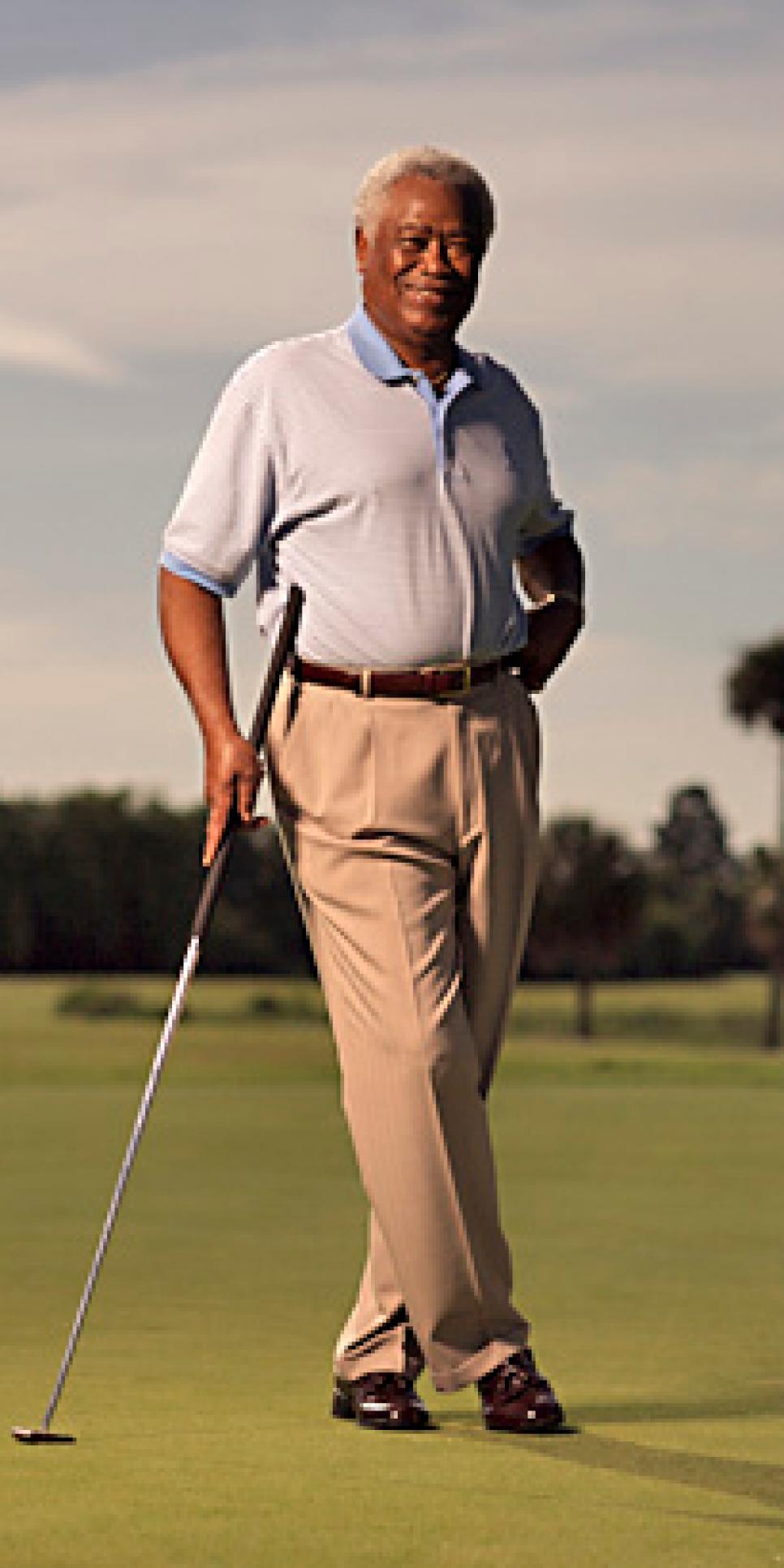News
Backspin

Plagued by severe yips, Owens tinkered until he found a long putter that worked.
Whether anchored against the sternum, placed under the chin or rested against the belly, long putters are a familiar part of the golf landscape. Eighteen years ago, as Golf World reported in its Sept. 1, 1989, edition, the USGA decided the clubs "are not detrimental to the game. In fact, they may enable some people to play who may not otherwise be able to do so."
That was certainly the case for senior golfers who were using long putters effectively. Orville Moody's victory at the 1989 U.S. Senior Open attracted a lot of attention to the trend, but he was just following in the footsteps of Charlie Owens, who invented and popularized a 50-inch broomstick model several years earlier and won two Senior PGA Tour events in 1986, inspiring some of his peers to start using them, too.
It is clear the USGA wouldn't have been debating the legality of long putters if Owens hadn't put his imagination to work trying to beat the yips. Necessity definitely was the mother of his invention. "I had the yips so bad," recalls Owens, now 77 and retired in Tampa. "I would freeze up on a two-footer. Putting is a peculiar animal, and it works in mysterious ways. It's mind over matter, but it's hard to get over that hurdle. When you don't think about anything but missing a putt, naturally you're going to miss it."
Although Owens had tried various things to beat his putting woes, from counseling to a left-handed style, and won the 1974 Florida Open using a split-handed grip on a putter that "couldn't have been more than two feet long." But no remedy lasted for long. "Some [older] guys still have nice calm hands, and some hands will be jumping like a pot of boiling peas," he says. "That's the way mine were."
While 1938 PGA champion Paul Runyan had suggested a split-handed, belly-putting style with a shaft between 38 and 43 inches to counteract putting nerves in "New Help For Old Nerves," a 1966 article for Golf Digest, the method didn't catch on. In 1982 Owens developed an even longer club to anchor in his sternum in a very upright stance to facilitate a true pendulum stroke.
"I thought I could come up with something that looked good and was the right weight, so I would have only one hand to deal with, my right hand," Owens says. He experimented with Anser, 8802 and Zebra heads at the end of two shafts welded together, loading them up with lead tape. "The heavier they got, the better they felt, but I couldn't get one heavy enough. I had control of the yips, but I had to hit it too hard on long putts."
Owens kept tinkering. "I bought a brass bar," he says. "I had a friend who was a machinist and took it to him with a blueprint of the way I wanted it to look. He cut the shape I wanted, which was almost like a flying saucer with a square face." The 3½-pound "Slim Jim" -- "That thing was so ugly," Owens says -- was born.
Long distinguished by his cross-handed grip on full shots and disabled left leg as a result of a paratrooper training accident, Owens won a 36-hole local event in Florida with 21 and 24 putts not long after putting the Slim Jim in his bag. Once he began to have success on the Senior PGA Tour, Owens got a deal with Matzie Golf. "I didn't patent [the putter]," says Owens. "I didn't think it was going to be a hit."
He would just like a little credit where credit is due. "I watch all these tournaments on TV," he says, "and if the long putter comes up, my name never gets mentioned. Nobody says anything about Charlie Owens."